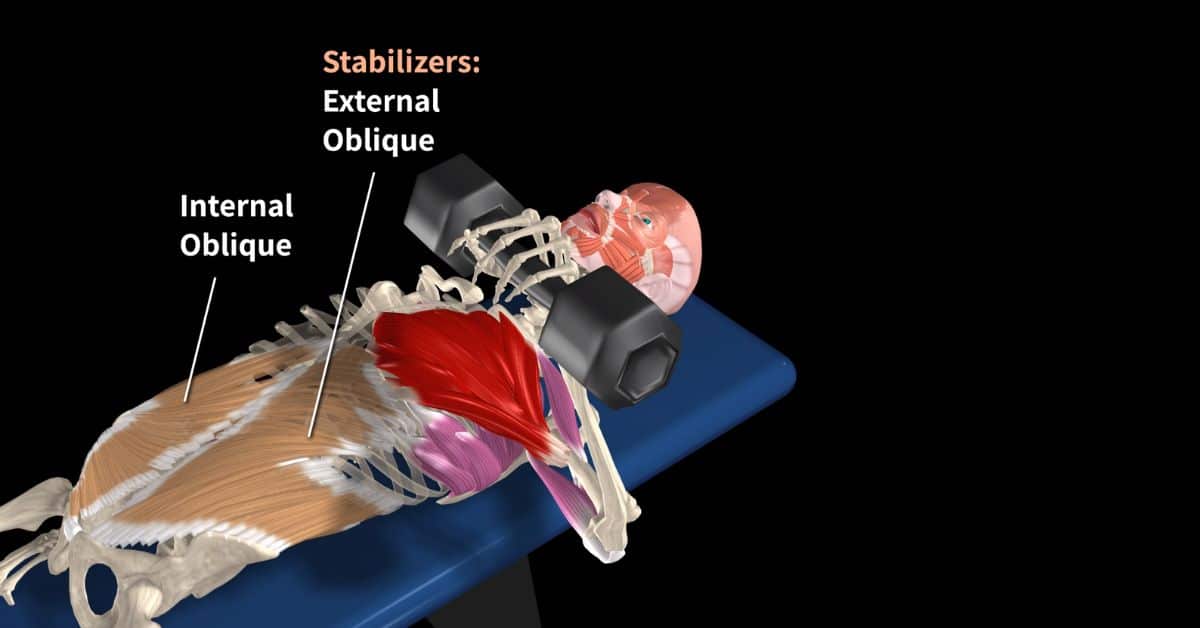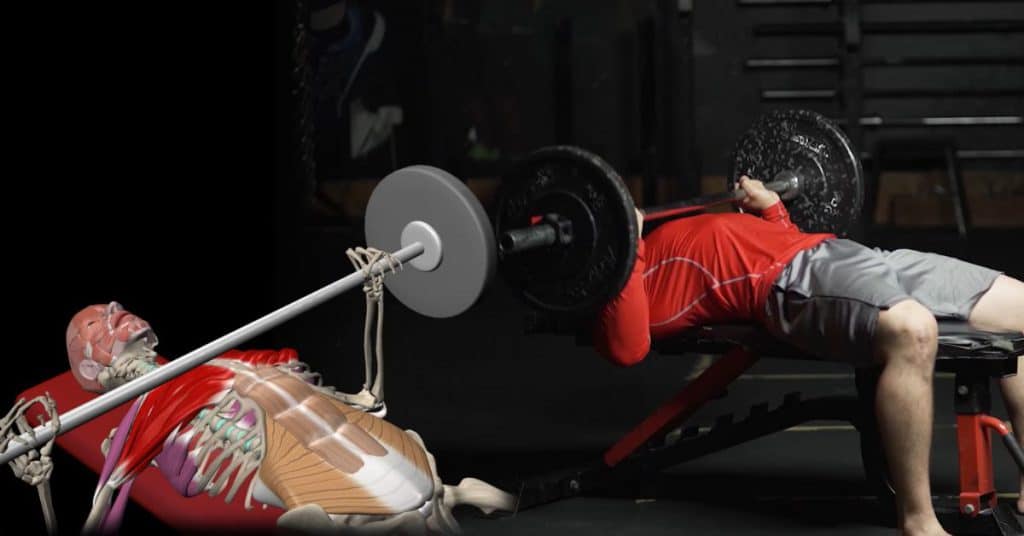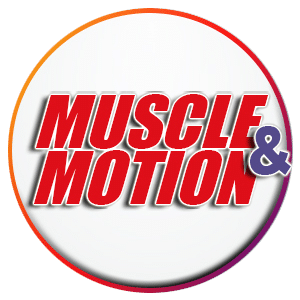The Bench Press is one of the most popular upper-body exercises in any gym; no matter where you go, someone will be at the bench press station. Contrary to popular belief, it’s not just a chest exercise – the triceps, shoulders, back, and even glutes are all involved. Therefore, the bench press should be included in any workout routine. In this detailed Muscle and Motion guide, you will learn how to bench press with proper form to build strength and enhance your muscles.
Which muscles work during the bench press?
The bench press is not only a chest exercise. It is a compound exercise that engages multiple muscle groups and joints simultaneously. It is a great way to build strength and save time during your workout, as it targets more muscles than isolation exercises such as calf raises, leg extensions, and biceps curls.
Here are a few of the muscles used during the bench press:
- Pectoralis major – primary shoulder horizontal adduction
- Anterior deltoid – assists in shoulder horizontal adduction
- Coracobrachialis – assists in shoulder horizontal adduction
- Triceps brachii – elbow extension
- Serratus anterior – scapula protraction
- Abdominal muscles – stabilize the torso

How to bench press properly: step-by-step
- Lie with your back on a flat bench and hold a barbell in your hands. Ensure that your feet are flat on the floor.
- Grab the bar with an overhand grip. Your hands should be slightly wider than shoulder-width apart, elbows fully extended.
- Take a deep breath, lift the bar off the rack, and place the bar slightly below your shoulders.
- Slowly lower the bar until it touches your chest; your elbows should point to the sides and slightly downward.
- Push the bar back up to the starting position.
- Repeat for the desired number of repetitions.
The powerlifting bench press style
The bench press is a widely-used exercise for both powerlifting and bodybuilding. Powerlifters use it to increase strength and push as much weight as possible, while bodybuilders use it to gain muscle size. The technique used to perform the bench press and how you structure your training program will vary depending on your goals.
The primary purpose of the powerlifting style is to move as much weight as possible from the chest until you lock out your elbows. Powerlifters arch their back and lift their chest up in order to reduce the distance the barbell needs to travel from the starting position to the chest, thus allowing them to lift heavier weights.
*Watch the post we posted on Instagram regarding the Powerlifting Style.
Three common bench pressing mistakes to avoid:
- Overly narrow barbell grip
Gripping the barbell with your hands too close together during the bench press reduces the workload placed on the pectoralis major and increases the amount of work done by the anterior deltoid and triceps muscles. This causes the shoulder to go through flexion rather than the intended horizontal adduction, which reduces the effectiveness of the exercise for strengthening the pectoralis major. - Not completing the full range of motion
If you want to get the most out of an exercise to strengthen a particular muscle, you should ensure you are using a full range of motion. Not using a full range of motion is often due to a lack of knowledge, but this can easily be corrected by understanding that the bar should touch the chest for maximum muscle engagement. Variations of the bench press, such as pin press and dead press, may be used, but when lifting according to competitive standards or maximizing muscle engagement, the bar must make contact with the chest. - Bouncing the bar off the chest
Another common mistake usually made by beginners is to bounce the bar off their chest when performing the exercise. This mistake is usually due to miscommunication – when instructed to touch the chest with every rep, trainees may mistakenly interpret this as an instruction to quickly hit the chest and go through the rep. If you want to build muscle strength or are a powerlifter, it is not beneficial to bounce the bar off your chest. Bouncing the bar off your chest reduces the time your muscles are under tension and instead relies on the stretch reflex and the rigidity of your rib cage to help push the weight up rather than training the muscles to lift heavier weights.
Bench pressing with a barbell or a dumbbell: which is better?
The answer to this question depends on what goals you want to achieve. Both barbells and dumbbells are effective tools for strength training, but they have different advantages and can be used for different exercises.
- Dumbbells
The dumbbells allows your shoulders to go through a greater range of motion and further challenge your shoulder stabilizing muscles.
- Barbell
The barbell is better than dumbbells at targeting specific muscles, as it requires fewer stabilizing muscles to be engaged during the bench press, and allows for heavier weights to be lifted.
Ultimately, it is up to you to decide which type of weight is better for your particular fitness goals.
Different types of bench press to add to your workouts:
Learn about the different types of bench presses and how to incorporate them into your workout routine.
Incline or decline bench press?
The primary muscle active in the bench press is the pectoralis major, which is composed of three separate parts:
- Clavicular part
- Sternocostal part
- Abdominal part
Different angles of the bench press can affect the activation of this muscle, so it is essential to consider which angle will best target the desired part of the muscle.
-
Incline Bench Press:
In this exercise, a 30° inclination will produce greater activation of the pectoralis major’s upper portion. If the incline is over 30°, we will see a significantly greater activation of the anterior deltoid and a decrease in EMG activity in the three portions of the pectoralis major.
-
Decline Bench Press:
In this exercise, a 15° decline will produce greater activation of the lower pectoralis major.
-
Close Grip Bench Press
In the Close Grip Bench Press variation, the elbows are pinned to the body, and the shoulder movement is flexion rather than horizontal adduction. This will help you focus on strengthening the triceps and anterior deltoid muscles rather than the pectoralis major.
-
Single-arm Chest Press
Unlike previous exercises, the Single-arm Chest Press is asymmetrical, using only one dumbbell to press at a time. Asymmetrical exercises challenge you to use your core muscles to keep your body stable while performing the movement. Doing so will help you learn how to engage your core and brace your body correctly when lifting weights.

At Muscle and Motion, we believe that knowledge is power, and understanding the ‘why’ behind any exercise is essential for long-term success.
Let the Strength Training App help you achieve your goals! Sign up for free.
Reference:
Rodríguez-Ridao, D., Antequera-Vique, J. A., Martín-Fuentes, I., & Muyor, J. M. (2020). Effect of five bench inclinations on the electromyographic activity of the pectoralis major, anterior deltoid, and triceps brachii during the bench press exercise. International Journal of Environmental Research and Public Health, 17(19), 7339.
Written by Uriah Turkel, Physical Therapist and Content Creator at Muscle and Motion.



